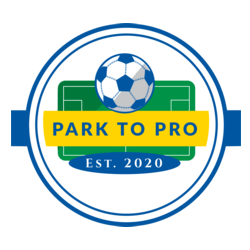In this 2 part blog post, I’m going to discuss what football actions are and how the speed of them specifically, can impact your player outcomes.
Today, I’ll be focusing on them within a youth team context. During this process, I’ll use 2 ends of the spectrum, with one being children within a youth setting (first season playing competitive football) and the other being, professional football. The interesting thing here will be, that I recently spoke to a colleague of mine, who has played in the Premier League. In the discussion we explored the experiences he had against Frank Lampard and Cesc Fabregas, within his career.
What is clear before we start, is that all football actions by definition are the same. Whether you are a player at under 7’s or a professional in the Premier League, when making a pass (in the correct context), you will be communicating, making a decision and executing a decision. The differing factor between the 2 ends of this spectrum, is the space that a player has and the time afforded to them. This characteristic underpins the football action and impacts how fast/slow a player executes a given decision.
If we look at youth football firstly, these players are at the start of their journey and have a very limited amount of references in their brain. There wouldn’t be much regard for game insight as all the player would be interested in, is the ball, where it is and maybe how many goals they score during the game. If you were to look at professional football, this would be a lot more complex and would require thinking, of an extreme level.
The speed of actions itself is key to a players development and could assist the speed of their own learning. Although this all sounds pretty logical, it is extremely hard to diagnose exactly where a player could be incompetent and then improve this. How do you do it? What tools could you use?
I’ll list a few of things that you should consider when you’re coaching, that could firstly help you expose certain incompetencies, to then help you improve them.
Understanding what a football action is – If you don’t know what a football action is, how can you coach someone? By not knowing what something is, you can’t expect to improve that something.
Opposed practices, instead of isolated ‘drills’ – If you opt to host an unopposed practice, you are taking away communication and decision making, with the practice now just focusing on execution. While this maybe necessary on the exception of the rule basis, as soon as the player is competent, they need to be executing football actions, not basic actions.
The size of the training area that you have chosen – If the playing area is extremely large, be prepared to see less turnovers of the ball and slower intensity (the speed of football actions will be reduced). If the playing area is extremely tight, then there will be less space and time, which means the attempted actions will look extremely quicker.
The interference, that the opposition are providing – Opposition are key for learning, as on a match day there will be other players, providing as much unpredictability as possible. If the opposition in your practices are merely walking around and not attempting to defend properly, then you may only get a small percentage of improvement. If they press with explosiveness and really attempt to restrict the attacking team from reaching their objective (to score at least one more goal than the opposition), this interference will force the players into quicker execution of decisions.
The speed of football actions, is the ‘intensity’ – The football action itself is the intensity of how the game will look. If a player takes 5 seconds to execute an action in space, it would look extremely slow. Where as, if a player was put under extreme pressure within a small space and they take 2 seconds to execute their decision, then this would look ‘quicker’.
Instruction causes conscious firepower – Instruction from outside of the players own conscious brain, will cause the player to act slower. We ideally want players to execute football actions unconsciously (which means they don’t need to think). If a player focuses on verbal information for example, their unconscious brain will be unemployed (not used), while the conscious brain will be focusing on the verbal input. This will distract attention, thus meaning a slower execution of decision.
Incompetencies in thinking, will slow down decision making – If a player is unable to think about the next action or they are unable to adapt within action, they will be exposed to a very uncomfortable moment where they won’t know what to do. This will reflect in the speed of how they act and as a consequence, could lead to the wrong execution of the proposed decision.
While the list and reasons isn’t exclusive to everyone, I’m sure there will be one suggestion that could assist you, in improving your training sessions,
The professional game on there other hand is a lot more complex and this will be explained in next weeks blog, ‘Speed of football actions – Part 2’.

